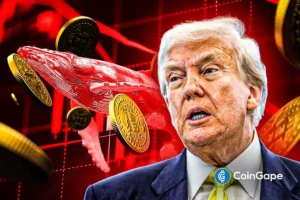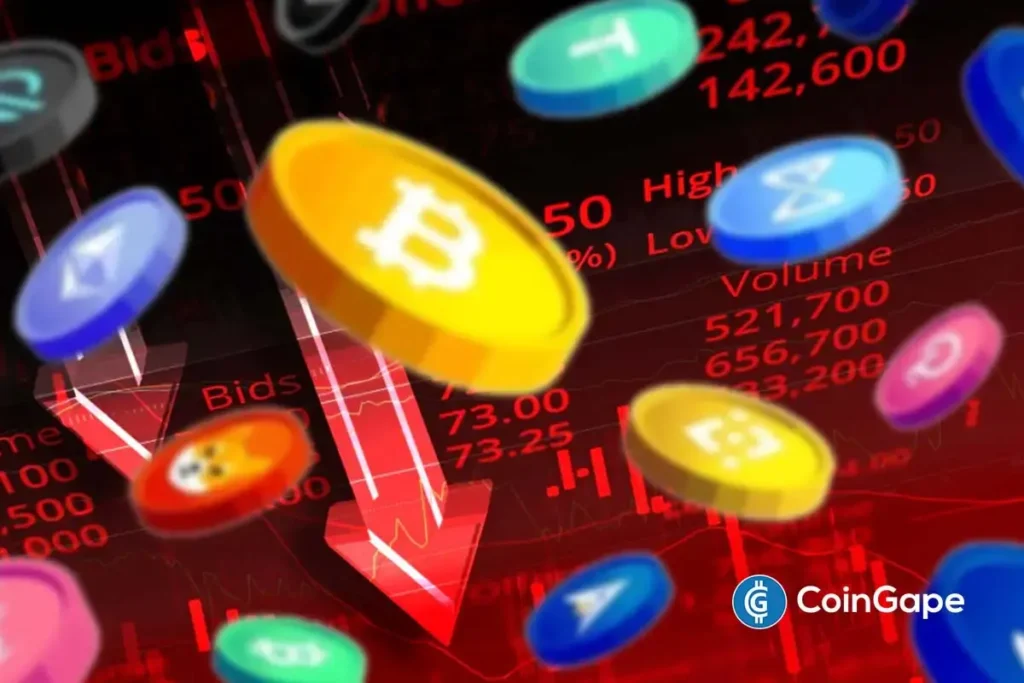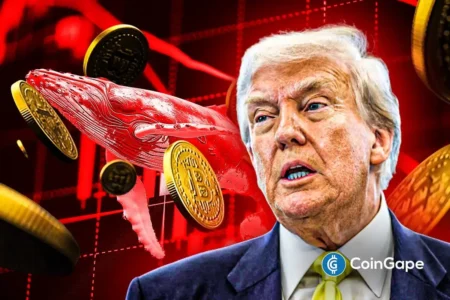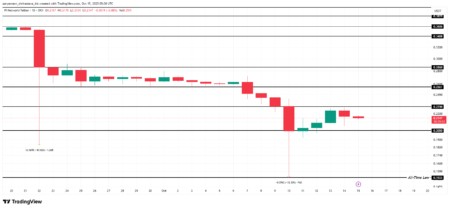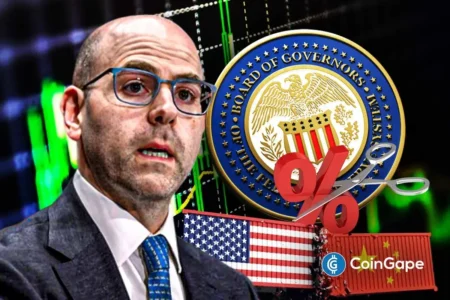Crypto Market Dynamics Amid U.S.-China Trade Tensions
The cryptocurrency market witnessed a robust start this October, with significant gains driving investor optimism. However, this positive trend faced abrupt turmoil due to escalating trade tensions between the United States and China. The recent actions and declarations from both nations have caused a ripple effect, igniting a downturn in crypto asset values that underscores the sensitive interplay between global trade pressures and financial markets.
Trade War Escalation and Market Impact
The decline in the crypto market began shortly after President Trump proposed a staggering 100% tariff on imports from China, set to take effect on November 1, 2025. Market recovery was observed late Sunday into Monday, but optimism proved short-lived as bearish sentiment returned. By Tuesday, October 14, the situation worsened when the U.S. and China imposed new port fees on each other’s shipping operations—extending the trade war into the transport arena. This move not only heightened tensions between the two economic giants but also introduced an element of unpredictability, which sent shockwaves through the crypto market.
China’s Ministry of Commerce issued a firm warning that it is prepared to "fight to the end" if the U.S. continues its aggressive trade stance. Nevertheless, the ministry expressed a willingness to engage in dialogue, suggesting that a diplomatic resolution is still feasible. However, such statements did little to reassure investors, as fears of prolonged economic friction loomed over the market, triggering anxiety among traders—an anxiety that has roots deeply embedded in past market trends during similar geopolitical strains.
Profit-Taking and Market Sentiment
Market analysts, such as Ted Pillows, have linked the recent downturn directly to the heightened tensions stemming from the U.S.-China trade conflict. With a prevailing sense of uncertainty, many traders have opted for profit-taking strategies after witnessing early strong performances within the crypto space. The accumulation of fear has led to significant shifts in market psychology, as indicated by the Bitcoin Fear & Greed Index, which has recently dropped into the "Fear" zone—a clear indication that investor sentiment is increasingly uneasy.
Data from Glassnode points to particularly low funding rates in the derivatives market, reminiscent of the bear market conditions experienced in 2022. Leading analytical groups, including Santiment, have emphasized that this uncertainty surrounding U.S.-China negotiations will crucially determine the crypto market’s trajectory moving forward. With the market capitalization of cryptocurrencies plummeting by nearly 4% to $3.75 trillion, the shadow of fear looms large, impacting major players like Bitcoin and Ethereum.
Ethereum and Bitcoin: Facing Significant Losses
The repercussions of the trade war on the cryptocurrency market are starkly evident in the significant losses sustained by leading cryptocurrencies. As of mid-October, Bitcoin’s price retraced to around $111,000, while Ethereum has experienced a similar downturn. Compounding the downward momentum, recent data revealed substantial net outflows from cryptocurrency exchange-traded funds (ETFs). Specifically, Ethereum spot ETFs saw $429 million in net withdrawals, marking the third consecutive day of significant outflows. Similarly, Bitcoin spot ETFs also faced approximately $327 million in outflows.
The prevailing bearish conditions have left many investors on edge, as market volatility continues to oscillate based on developments in the U.S.-China trade environment. The timing and nature of negotiations between these superpowers will be instrumental in determining if the market can stabilize or if further declines are on the horizon.
Whale Investors and Market Dynamics
In the midst of this market turbulence, the activities of seasoned investors—often referred to as "whales"—have caught the attention of the trading community. A notable instance involves a Trump Insider Whale that strategically shorted Bitcoin prior to the market’s dip, subsequently expanding their short position to an alarming $340 million. This particular investor had already made significant gains with earlier short positions valued at $700 million in BTC and $350 million in ETH, netting over $200 million in profits.
The whale’s renewed and aggressive short selling adds a layer of complexity to the already volatile market. Many traders consider this behavior as indicative of a potential downward price correction looming ahead, heightening investor anxiety. Nonetheless, experts positing that such selloffs may present buying opportunities once the situation stabilizes encourage a more favorable outlook amid the prevalent fear.
Navigating Amidst Uncertainty
As the situation continues to unfold, the cryptocurrency market remains in a state of flux heavily influenced by external geopolitical factors. Analysts urge traders to remain vigilant and proactive in response to the evolving dialogue between the U.S. and China, suggesting that market corrections, although unsettling, can also yield opportunities for long-term investors. If negotiations yield clarity, there is a strong possibility that market confidence will rebound, potentially driving prices upwards once again.
Ultimately, the interplay between global economic conditions and digital assets continues to shape the trajectory of the crypto market. A balance of strategic investment, market awareness, and geopolitical insight will serve investors well during these unpredictable times. While the current climate may seem daunting, history reminds us that markets can recover quickly, rebounding from adversity to reach new heights.
In conclusion, ongoing vigilance, strategic decision-making, and an understanding of the broader economic landscape will be critical as investors navigate through these turbulent waters in the crypto world. As the U.S.-China trade saga continues to unfold, the ability to interpret geopolitical signals will be paramount in shaping investment strategies moving forward.



